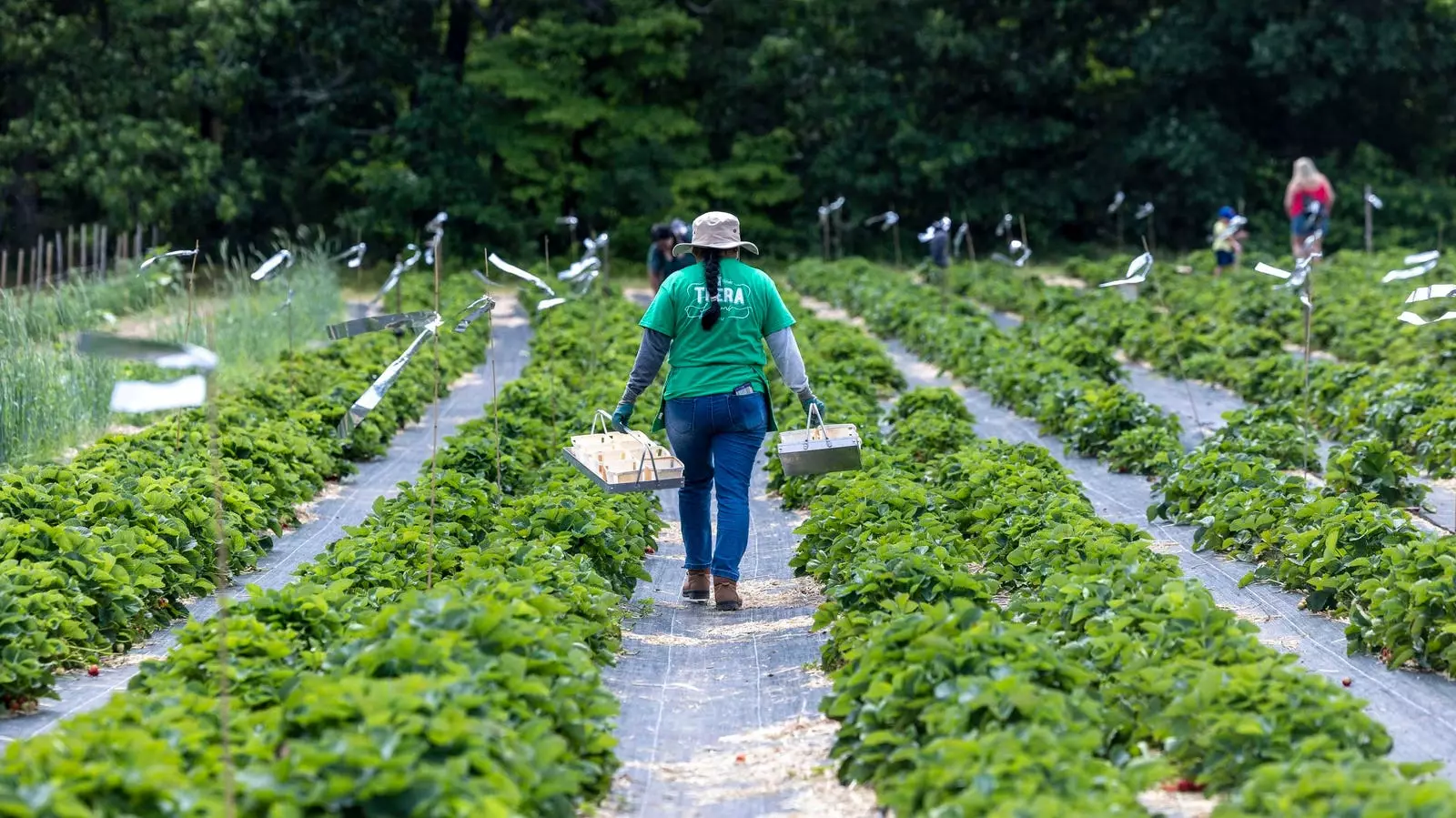As droughts become increasingly severe and extreme weather events multiply in intensity, the specter of food insecurity looms larger than ever before. According to the Food and Agriculture Organization (FAO) of the United Nations, a staggering 733 million individuals—approximately one in every eleven people on the planet—currently find themselves facing hunger. This grim statistic is further compounded by the fact that nearly three billion individuals cannot afford a healthy diet, leaving them vulnerable to malnutrition and related health issues. Scholars and experts, such as Dr. Evan Fraser from the Arrell Food Institute, characterize this predicament as a series of “cascading crises,” a systemic failure that calls for immediate and effective interventions.
The urgency of this situation is highlighted as we approach World Food Day on October 16. This occasion serves as a wake-up call to not only acknowledge these alarming trends but also to reflect on the potential measures needed to ameliorate them. Drawing attention to the theme for this year’s World Food Day, “Right to Food for a Better Life and a Better Future,” it becomes clear that access to nourishing, safe, and affordable food should be a universal entitlement—a goal we can and must strive to reach.
One critical solution to achieving food security lies in embracing diversity within our agricultural systems. Sieglinde Snapp, Director of the Sustainable Agrifood Systems Program for CIMMYT, argues that “diversity is the foundation of nature’s benefits.” Agriculture that incorporates a wide array of crops not only strengthens diets but also bolsters livelihoods—a crucial factor in a world where food systems are increasingly jeopardized by environmental degradation and conflict.
However, diversity must extend beyond the types of foods cultivated; it should also encompass diversity in the people involved, the agricultural practices employed, and the ideas shared. The recognition and elevation of marginalized voices, particularly those of women, are essential for creating a resilient food system. Women play a vital role in agriculture, often responsible for producing nutritious foods that contribute to diverse diets. Yet, in many regions, they remain systematically undervalued and lack equal access to resources such as land, education, and financial services, resulting in an acute loss of potential contributions to food security.
Advocates for gender equity in agriculture, like Tom Pesek from the U.N. Food and Agriculture Organization, emphasize the untapped potential of women farmers as key players in food systems transformation. By empowering women and granting them equal rights to resources, it is estimated that as many as 100 million people could be lifted out of hunger. It is both an ethical and practical imperative to foster this empowerment: when women thrive, communities prosper.
The need for gender-focused reforms in food systems is evident. Women are often stewards of biodiversity, growing a variety of healthy crops that enrich local food systems. Yet, despite their critical roles, these women frequently remain on the periphery of decision-making processes. Ensuring that they are included in conversations about agricultural practices and food security initiatives is paramount for generating effective solutions.
Moreover, for food systems to evolve successfully, producers—including women farmers—must be adequately represented in discussions surrounding agricultural policy and growth strategies. As Jeffrey Herrick indicates, prioritizing approaches that specifically cater to the needs of farmers is essential. They need to have meaningful participation in international dialogues, such as the U.N. Biodiversity Conference and COP29 discussions on climate change.
Initiatives like Good Nature Agro in Zambia exemplify the importance of collaboration between farmers and organizations to develop sustainable agricultural practices. Additionally, the McKnight Foundation’s support for global farmer research networks highlights the importance of local insights that tailor ecological solutions to specific challenges.
One significant hurdle to revitalizing agricultural production lies in the financial systems in place. Jahan-Zeb Chowdhury, Global Lead of the Environment and Climate Cluster at IFAD, points out that smallholder farmers, who contribute to one-third of the world’s food supply, receive a mere 1.7% of total climate finance. This disparity calls for a reassessment of how financial resources are allocated, ensuring they reach those cultivating our food and protecting biodiversity.
As we gather for events such as the Arrell Food Summit in Toronto, which will serve as North America’s official World Food Day celebration, there is hope that meaningful discussions will lead to actionable strategies for transformative change in food systems worldwide.
World Food Day serves not only as a moment to confront the difficult realities of our current food systems but also as a beacon of hope for future innovation and transformation. As we continue to engage in these crucial conversations, the goal remains clear: to create a global food system that is equitable, accessible, and capable of nourishing generations to come. In doing so, we can move towards a future where everyone has the right to enjoy tasty and nutritious meals, fundamentally changing the narrative around food insecurity.

